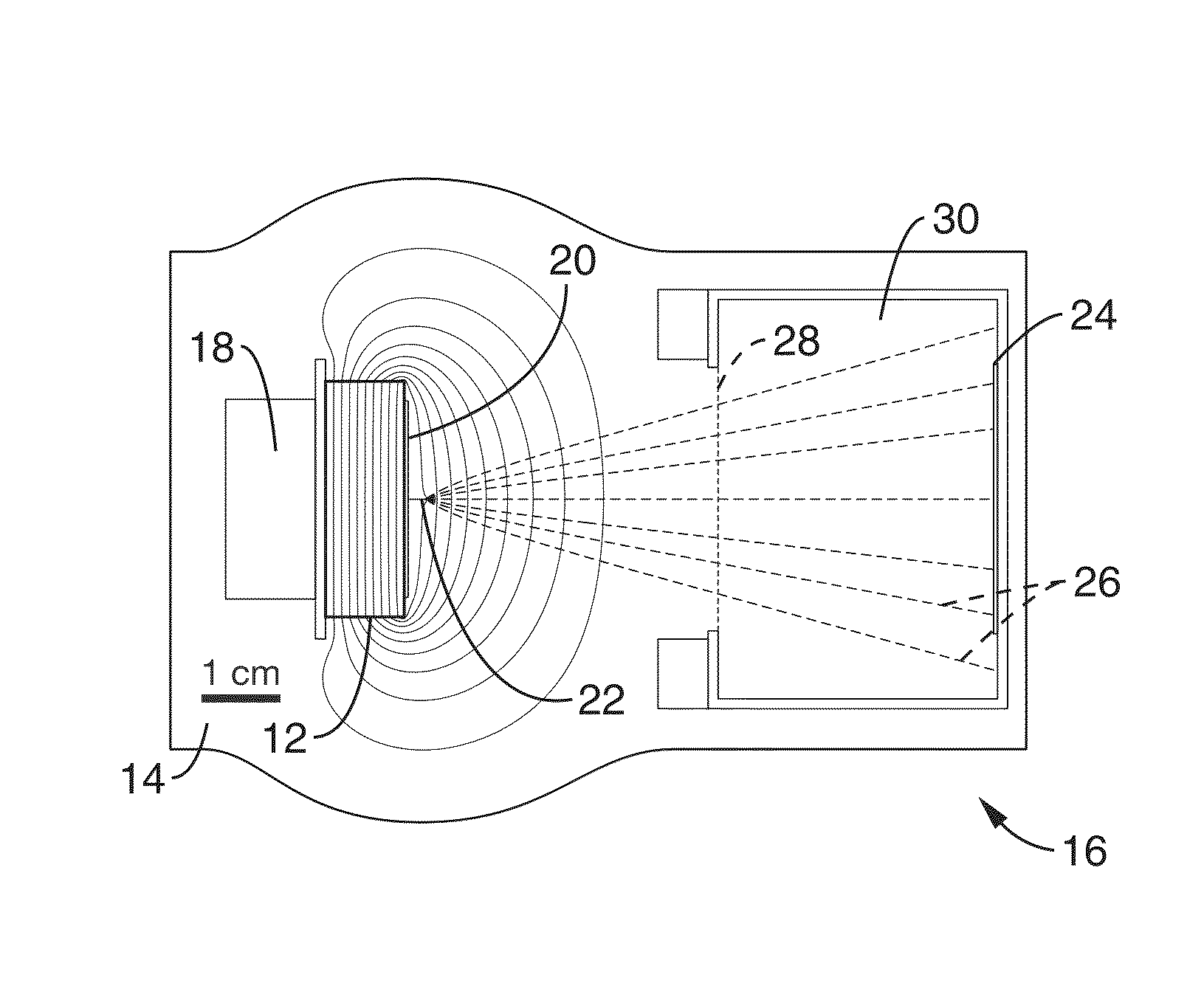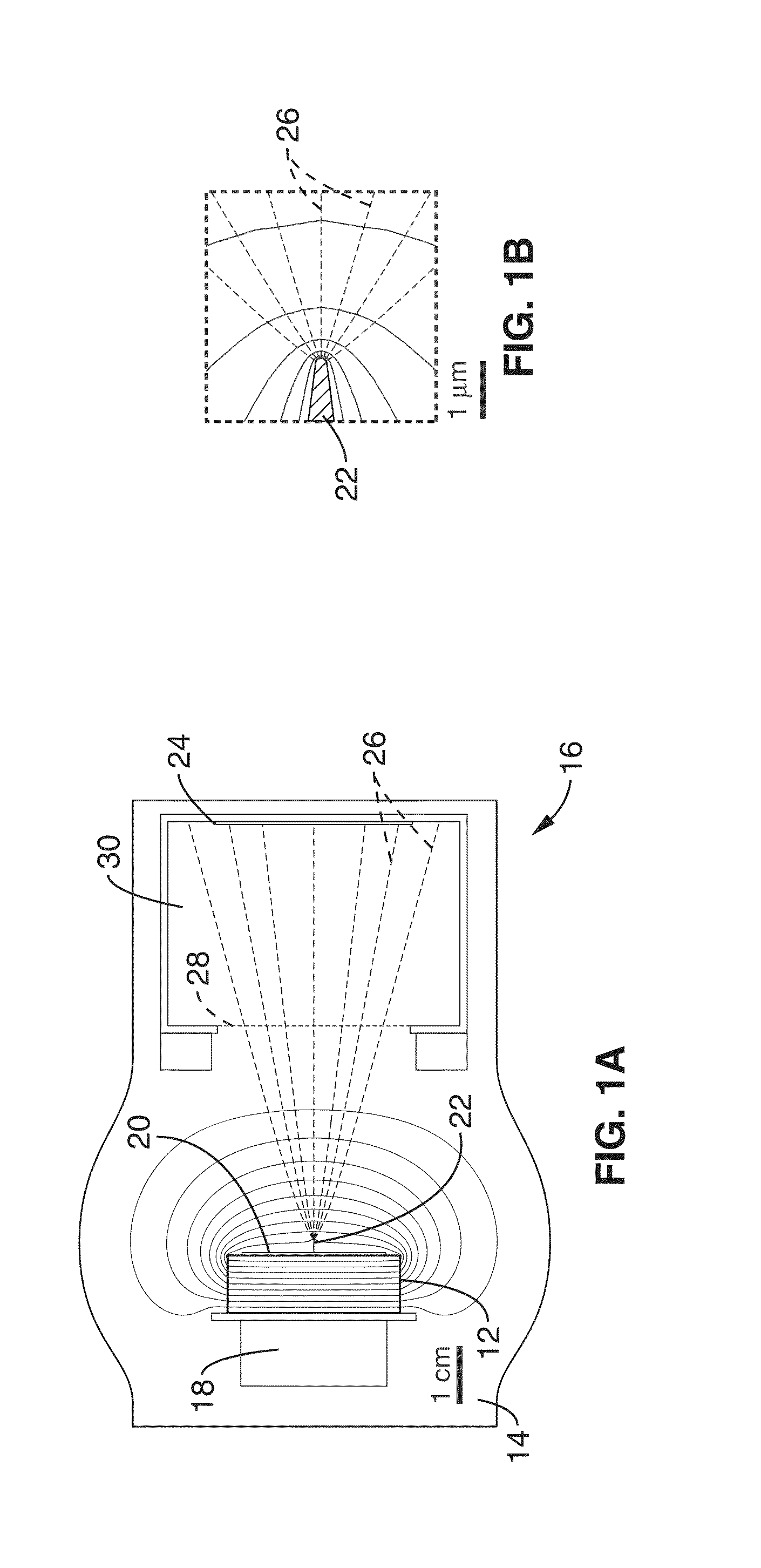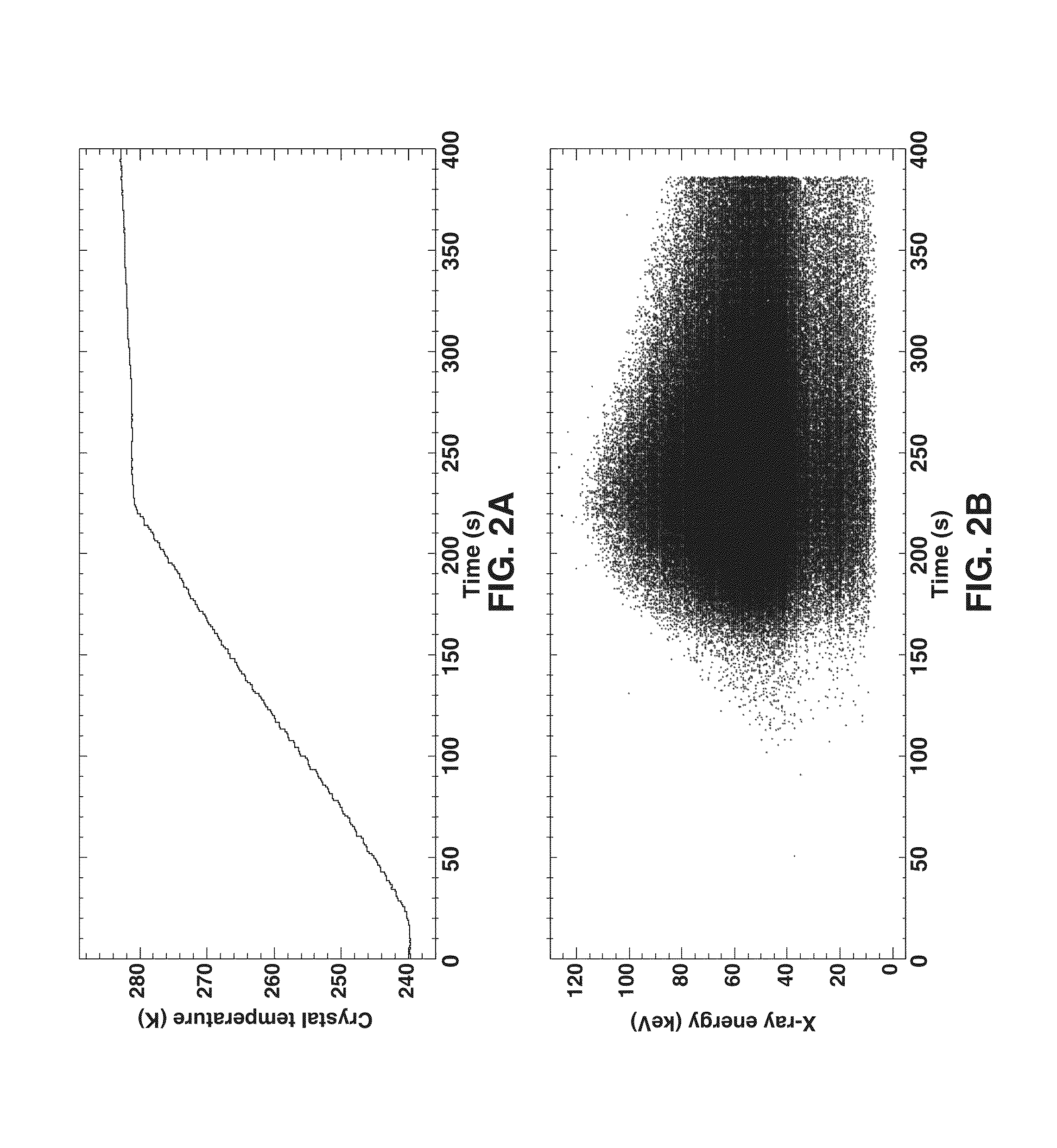Method and apparatus for generating nuclear fusion using crystalline materials
a technology of crystalline materials and nuclear fusion, applied in the field of fusion research, can solve the problems of deep skepticism of attempts to produce fusion in a room temperature solid-state setting, including fusion and “bubble” fusion, and achieve the effect of reducing the risk of fusion
- Summary
- Abstract
- Description
- Claims
- Application Information
AI Technical Summary
Benefits of technology
Problems solved by technology
Method used
Image
Examples
example
[0032]The vacuum chamber setup is shown in FIG. 1A. A cylindrical z-cut LiTaO3 crystal 12 (diameter, 3.0 cm; height, 1.0 cm) was mounted inside a chamber 14 with negative axis facing outward onto a hollow copper block 16. A heater 18 is located adjacent the crystal 12. On the exposed crystal face, we attached a copper disc 20 (diameter, 2.5 cm; height, 0.5 mm), allowing charge to flow to a tungsten probe 22 (shank diameter, 80 μm; tip radius, 100 nm; length, 2.3 mm) (FIG. 1B). The probe geometry was chosen so that the tip field was approximately 25 V nm−1 when the crystal face was charged to 80 kV. D2 pressure was set using a leak valve and monitored with a D2 compensated Pirani gauge. The target 24 was a molybdenum disc coated with ErD2.
[0033]FIG. 1A also shows calculated equipotentials and D+ trajectories 26 for a crystal charged to 100 kV; calculations were performed using finite-element methods. The grounded copper mesh 28 (85% open area, 19.8-mm wire) shields the Faraday cup 30...
PUM
 Login to View More
Login to View More Abstract
Description
Claims
Application Information
 Login to View More
Login to View More - R&D
- Intellectual Property
- Life Sciences
- Materials
- Tech Scout
- Unparalleled Data Quality
- Higher Quality Content
- 60% Fewer Hallucinations
Browse by: Latest US Patents, China's latest patents, Technical Efficacy Thesaurus, Application Domain, Technology Topic, Popular Technical Reports.
© 2025 PatSnap. All rights reserved.Legal|Privacy policy|Modern Slavery Act Transparency Statement|Sitemap|About US| Contact US: help@patsnap.com



